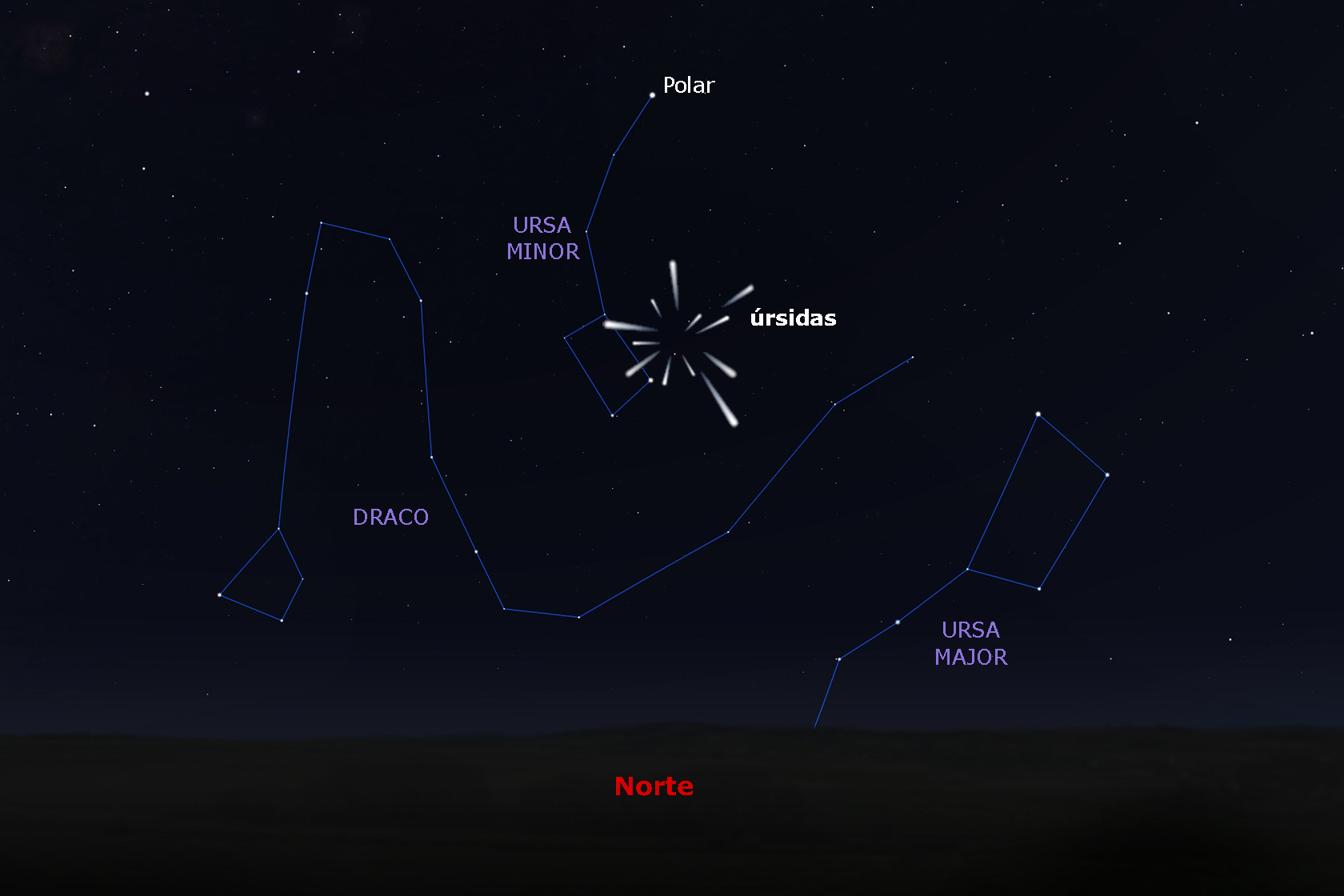Información astronómica

Úrsidas
La lluvia de meteoros de las úrsidas es visible, en el hemisferio norte, entre el 17 y el 26 de diciembre. Su tasa de actividad es modesta, entre 10 y 50 meteoros por hora, con una velocidad de unos 33 kilómetros por segundo. Las úrsidas suele pasar desapercibidas debido a que están situadas entre dos lluvias de meteoros con una tasa de actividad mucho más alta, la de las gemínidas, que alcanzan su máximo una semana antes que las úrsidas, y la de las cuadrántidas, que alcanzan su máximo dos semanas después que las úrsidas.
Para observadores a nuestras latitudes, 40º norte, el radiante de las úrsidas se sitúa por encima del horizonte durante toda la noche.
¿Qué se espera en 2026?
El máximo de está lluvia de estrellas tendrá lugar a las 23 horas de tiempo oficial peninsular del día 22 de diciembre. La Luna estará prácticamente llena, por lo que su observación será bastante difícil.

El 'radiante' de las úrsidas.
¿Por qué suceden?
Los meteoros de las úrsidas son fragmentos del cometa 8P/Tuttle, descubierto en 1858. Como todos los años por estas fechas, la Tierra atraviesa un anillo poblado con los fragmentos desprendidos del cometa 8P/Tuttle en anteriores pasos cerca del Sol. Cuando uno de esos fragmentos (o meteoroides) entra en contacto con la atmósfera terrestre, se vaporiza por la fricción con el aire, creando así el resplandor luminoso que conocemos como meteoro o estrella fugaz.
Todos los meteoros de una lluvia parecen tener un único punto de origen. Este punto se denomina "radiante", y su localización se utiliza para nombrar a la lluvia de estrellas. Las úrsidas tienen su radiante cerca de la estrella Kocab en la constelación de la Ursa Minor (Osa Menor).
¿Qué hacer para ver las úrsidas?
El lugar de observación puede ser cualquiera con tal de que proporcione un cielo oscuro. Es preferible observar desde un lugar que tenga pocos obstáculos para la vista (como edificios, árboles o montañas), y no utilizar instrumentos ópticos que nos limiten el campo de visión. Aunque las úrsidas parecen venir de la constelación de la Osa Menor (de ahí su nombre), se pueden ver en cualquier parte del cielo. Conviene dirigir la mirada hacia las zonas más oscuras, en la dirección opuesta a la posición de la Luna si la observación se realiza cuando esta esté presente. Lo más cómodo es tumbarse y esperar a que la vista se acostumbre a la oscuridad.
